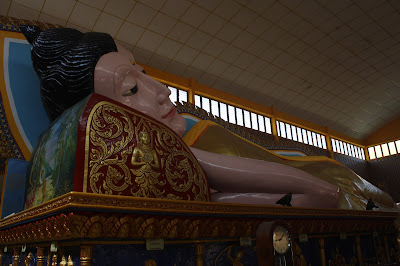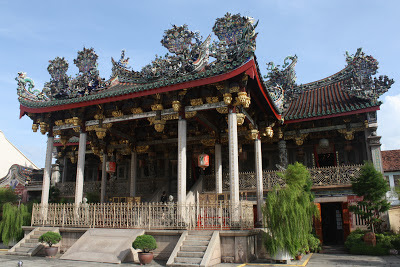Wat Chayamangkalaram is the official name of the Siamese Temple
located in Burmah Lane, Pulau Tikus, George Town. The temple was built by a
Theravada Buddhist monk who came from Siam (now Thailand) called “Phor Than Kuat” or
“Powerful Monk”, who apparently had such a love of Penang Laksa, that even to
this day, devotees bring a bowl of this sourish fish noodle soup to his shrine
as a offering.
The five acres of land was
donated by Queen Victoria in 1845 as a gesture of goodwill to the local siamese
community and to Siam via the East India Company.
The main shrine and pagoda were
built in 1900 originally with Chinese architectural features in the design. Subsequently the main
shrine was renovated and its present appearance is of a more modern conventional building with Thai
Buddhist decorative elements.
Inside the main shrine, there is
a 180 foot long gold plated statue of a reclining Buddha. The Buddha lies on
his right side with his head resting on the palm of his right hand, and his
left leg lying over his right one. A peaceful serene smile graces his face.
Behind the reclining Buddha are
niches with urns containing the ashes of devotees as well as murals on the
surrounding interior walls.
While there of course nicer and
more atmospheric Thai-style temples in Thailand itself, this temple stands as a
testament to the local siamese community and the historic links
that have always existed between Penang and Siam.
Wat Chayamangkalaram
Address: 17, Lorong Burma,
10250 Penang
Opening hours:
7.00am - 6:00pm everyday








































